It’s a tale as old as time itself – a new client asks us for a price or proposal sending us spiraling into the project estimation paradox. We’re left feeling like we have to chose between two unsatisfying compromises.
Do we spend a lot of time on this scoping exercise? Making sure we get all the details right, and risk wasting that time if we don’t win the work? Or do we copy an old proposal, make a few tweaks, cross our fingers, hoping that the project doesn’t end up being a bigger dumpster fire than the year 2020?
The truth is, those options don’t have to be mutually exclusive. With the right processes and feedback loops in our agency, it’s possible to estimate our agency projects with accuracy and speed.
In this long, detailed blog post I’m breaking down how we’ve helped our clients build these kinds of project estimating techniques. All by leveraging the data and insights, they were already creating every day. By the end of this post, you’ll be clear exactly on how to create fast and accurate project estimates in your agency too.
If you’re more of a listener than a reader, check out this video I shot on the estimation process.
Ready? Let’s jump in 🚀
- Benefits of Accurate Project Estimation
- Project Estimation Techniques to Build a Consistently Accurate Process
- Agency Profitability Flywheel
- Step One: Defining Your Project Estimation Framework
- Step Two: Installing Quantitative Feedback Loops (Time & Cost Tracking)
- Step Three: Data-Driven Conversations with The Team
- Step Four: Process Improvement Cycles
Benefits of Accurate Project Estimation
Over the years, we’ve worked with and spoken to hundreds of agencies about profitability, process and operations. What we’ve learned is that project estimating, and the ability to do it accurately is the foundation of almost every operational system in an agency or professional services firm.
Think about it – everything from consistently protecting profitability, to capacity management, resource planning and forecasting all rely on your ability to accurately predict the scope of your client work. Even things like protecting time to work on internal projects, take time off or spend time investing in learning and development rely on our ability to predict the scope of our work. Your operational systems are all built on top of those estimates in some way.
That’s why in 9/10 consulting engagements, we’ve found ourselves back at the project estimating process after our diagnosis. It’s often the root of the symptoms our clients describe when they reach out to us in the first-place.
What that means is that without a solid process – scaling your agency can be an uphill battle. Simply put, every system you try to build to predict resourcing, hiring, cash-flow and profitability will be unreliable. This is because the data those systems are built on is unreliable.
So, how do you fix that? Glad you asked…
Techniques to Build a Consistently Accurate Project Estimate
The objective of the project estimation process is to close the gap between our assumptions and reality. In other words, during every new project, we make a set of critical assumptions that are responsible for our business’s health. Assumptions about how much time, money or effort it will take to deliver the promised outcome to a client. It’s in our best interest to make sure our estimates produce assumptions that map as closely to reality as possible.
The common misconception is that inaccurate estimates are a result of us not being good enough at predicting outcomes. However, our experience has been that poorly defined processes tend to also be a big contributor. If your agency doesn’t have well-defined processes, you’re trying to hit a moving target in your process. Naturally, this adds to the difficulty of making that estimation process accurate.
Agency Profitability Flywheel
That’s why we’ve created a process called “The Agency Profitability Flywheel”. It’s designed to install feedback loops that connect the project estimating process to the delivery process. This helps take the learnings gained from measuring estimates vs actuals and use them to invest in high ROI process improvements. This flywheel will help you engineer accuracy into your operational model by making the model itself more predictable over time.
In this guide, we’ll cover the 4 essential steps of this framework:
- Defining Estimation Techniques
- Installing Quantitative Feedback Loops (Time & Cost Tracking)
- Establishing Reporting & Feedback Cadences
- Defining Process Optimization Cadences
Getting these first two steps in place will help you generate estimates quickly without compromising on accuracy.
Mastering the second two steps will give you the ability to engage your team in surfacing and implementing process improvement opportunities. This will improve your profitability, efficiency, and consistency and help you invest in the highest ROI process improvements over time.
Step One: Defining Your Project Estimating Framework
The first step to installing this feedback loop is to formalize the estimation framework. A standardized system for estimating work is fundamental to a scalable agency.
Keys to Successful Project Estimating Techniques:
- Standardizing the process by which we estimate work
- Standardizing the structure of the estimates that process produces
- Simplifying our data structures as much as possible so we can build scalable systems around it
There are many estimation techniques out there for the actual process of estimation. The one that’s right for you will depend largely on the kinds of services you’re offering, and what your business model looks like from a resourcing perspective. All things considered, what is most important is that it clearly defines measurable assumptions about the riskiest parts of our agency’s operational model.
A simple way to think about this is by answering the following question:
What are the assumptions that, if proven inaccurate, could have the largest impact on our profits, project cost and people? Would it force us to absorb costs or work a lot of overtime?
Generally this comes back to two important things…
1. Identifying Scoping Metrics
Scoping Metrics determines the relationship between the inputs you collect during the discovery or sales process and the effort required to complete the work.
To define your “scoping metric” try filling in the blank in this sentence:
The more _____, the more effort it will take to deliver on an engagement.
Usually, the answer is something like:
“The more…
- Budget the client has
- Webpages the client needs
- Blog posts the client wants
- Custom widgets the client needs
- etc.
For example:
“The more budget a client has, the more effort it will take…”
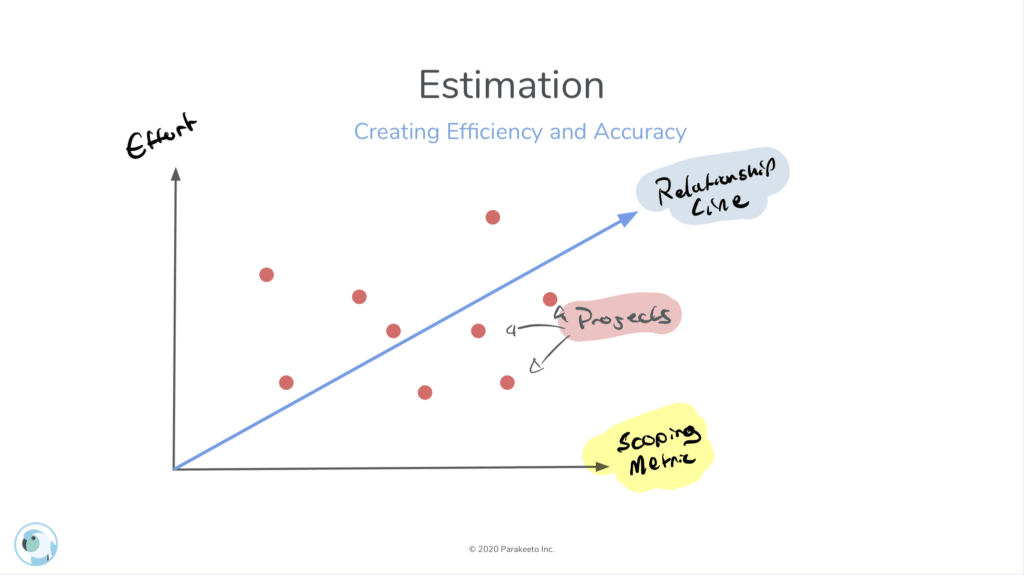
The end goal of this process is to determine a formula for how our project estimation inputs impact the outputs. This might look something like:
“On average, every additional $10,000 in the website budget will require 25 hours of design, 25 hours of development and 10 hour of project management time”
One of the fastest and most effective ways to improve our accuracy and speed in the process is to collect around this relationship.
This sets us up to basically collect inputs during the sales process, and quickly calculate accurate estimates.
2. Simplifying Data Structures and Reducing Complexity
It’s extremely important to choose the right level of granularity to estimate a project. If we’re too detailed, it can be extremely expensive and burdensome for our project managers to input their time leading to bad timesheet compliance and messy data.
By contrast, going too broad may leave us in a place where we don’t have the data to answer our most important questions. Balancing tradeoffs between complexity and overhead is key to landing on the right level of complexity.
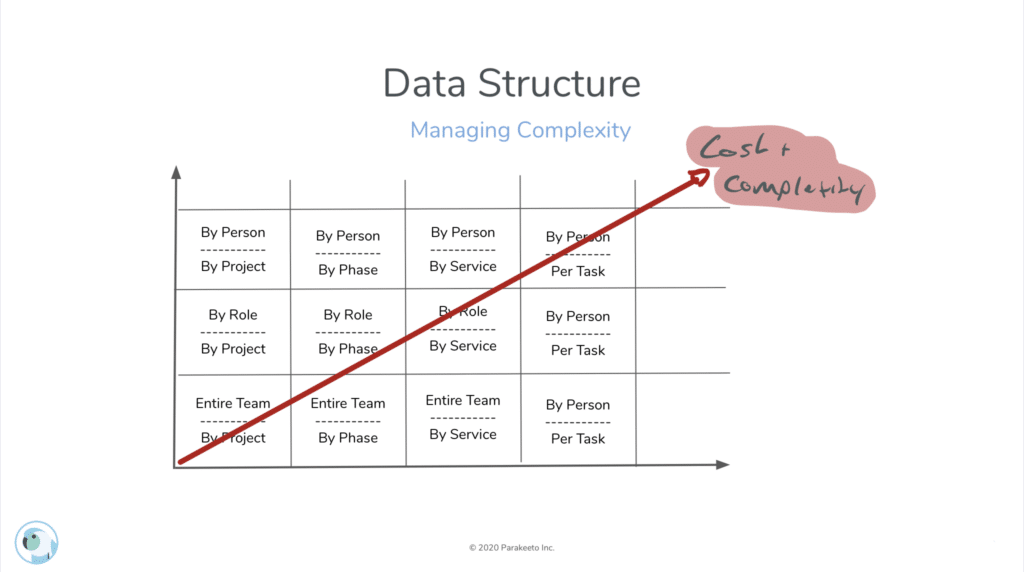
Reverse Engineering Your Thought Process
The way we work with clients to find the right structure is by reverse engineering the way they investigate projects that go off-track.
Ask yourself:
“What’s the sequence of questions I go through when a project goes wrong?”
Do you focus on the phase or step in the process that went awry? Or are you more focused on people or departments?
The answer to this question should help you identify what cross-section of insight is best for your agency. It should be just enough detail to get to support your investigation process and facilitate conversations with your team.
A second question to consider is to ask yourself how you resource projects. When you’re breaking down a piece of work and trying to estimate the amount of time it will take to complete its parts – what are the buckets you group time into?
For most agencies, this is going to be some kind of a skill-based or role based grouping.
For example:
- Design hours
- Development hours
- Project management hours
- Historical data
- etc.
Aligning your estimates and data structures to resourcing is a key component of tying that data back into the resource planning process. If this isn’t where you start today, you can rest assured you’ll end up there at some point as things like capacity forecasting become more important for your agency.
Here’s what the output of that process might look like:
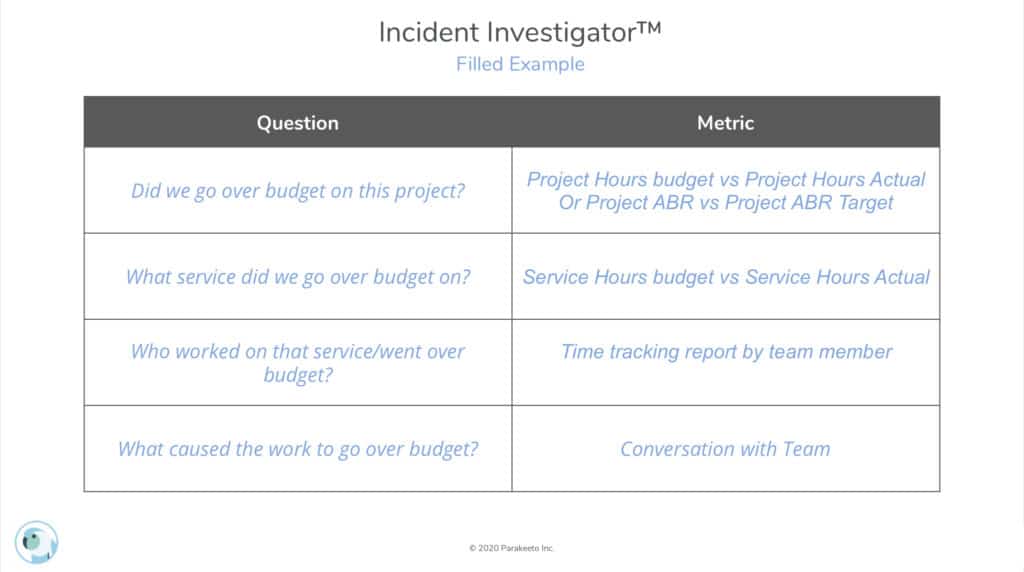
Want access to this template and many more to help you install a better project estimating process? Get your free copy of the agency profitability toolkit, which includes this free resource among many more, all designed to help you implement the Agency Profitability Flywheel™️.
Be Willing to Make Compromises
It’s important at this step to be willing to make compromises when it comes to what you can and can’t track. We see agencies fall into the trap of trying to track everything all too often. Remember that every additional layer of detail we add to our time & cost tracking systems exponentially increases the complexity and effort required to maintain it.
Start with the essentials required to audit when a project goes awry, and get enough information to guide a conversation with the team about why things went off track.
At this point you should have some clarity on how to get the right level of detail in your estimates. The next step in our process is to set up our process to measure actuals. This will help us measure the accuracy of our estimates over time, and learn from every project to make our agency more profitable and scalable.
Step Two: Installing Quantitative Feedback Loops (Time & Cost Tracking)
Estimates vs actuals – a simple but often elusive concept for most agencies to get a grasp on. This is the focus of our next step, making answering the questions we have about “Did we scope this right?” as easy and fast as possible.
This process is key because it essentially places data points on our relationship graph, and helps us build out formulas over time. The more data we can collect, the more reliable that formula and relationship line becomes.
The end goal of this process being the ability to collect information in a discovery call, and confidently calculate the effort required to complete a project using simple formulas.
ps: I shot an in-depth video on this topic as well.

While this sounds obvious and easy, unfortunately it’s often not as straightforward as one might hope.
There are two common conflicts that can derail this essential step. At the core, it comes down to the time tracking tool not being set up to match the way estimates are structured. This make reconciling actuals vs estimates more challenging than it needs to be.
In our experience, this unnecessary friction is the biggest reason most agencies don’t look at their data often enough to get value out of it. Most of the time we can trace the root cause of this friction and bad data structure back to one (or both) of the following issues.
Two Key Time Tracking Mistakes
1. Clashing project management and operational structures
The first common challenge at this stage has to do with a conflict between the way the operations team creates estimates for projects and the way the project management (PM) team wants to manage them.
The most common example I see is when estimates are broken down by function or role:
“X hours of Development, XX hours of Design, XX hours of Project Management, etc.”
Whereas the project management philosophy is more aligned with tasks:
X hours on the content outline, XX hours on the wireframes, XX hours on Q/A, etc.
This often becomes most problematic when the tools we use to track time are integrated into the project management tool. (be it a time-tracking tool or a resource planning tool)
Usually, the time-tracking data in this case takes on whatever structure is laid out in the project management tool. This becomes especially problematic when naming conventions in the project management tools aren’t horizontally consistent. For example, when we put a unique set of tasks on each project, despite them largely being the same across all our projects.
The end result is a data set that is unable to offer horizontal insights and is notoriously difficult to reconcile against the estimate. This makes it almost impossible to compare projects to each other and learn from past data.
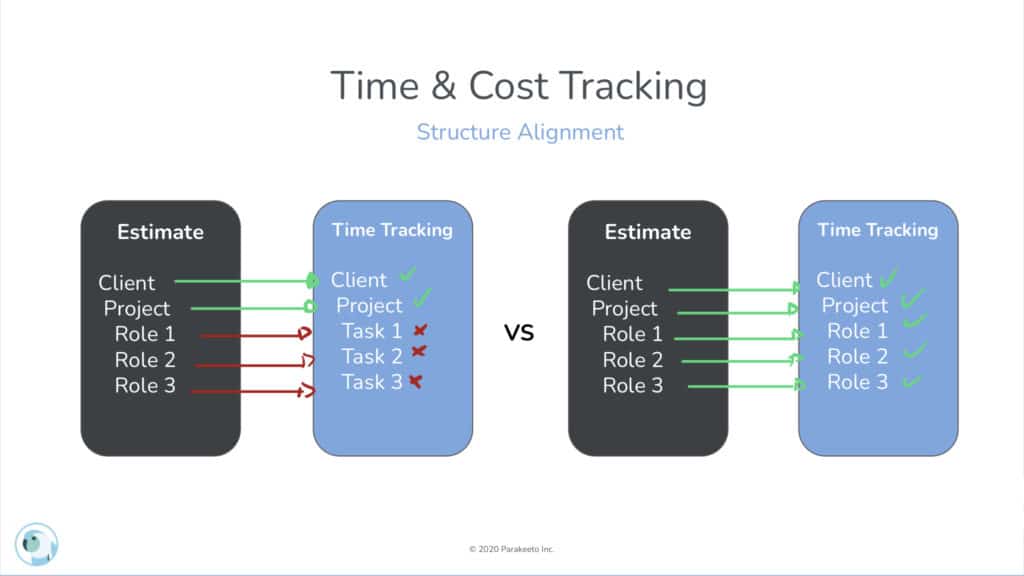
2. Lacking Proper Tooling for PM, Time and Cost-Tracking
At this step, it’s important to audit your time-tracking tools as well as the way you structure data inside them. Data to be structured in a way that aligns with your estimate and creates consistency across projects. It’s also important to make sure your time-tracking tooling can accomplish that without forcing your PM or operations team into a compromise.
You can often achieve this by using a time tracking tool that isn’t fully integrated with the project management suite. Some integrated tools can be configured using tagging systems to map data back to the right structure, but we’ve found this is often cumbersome and messy. Many agencies we’ve worked with use ClickUp, Monday.com, Asana or Teamwork for project management as well.
Using separate tools can help ensure that the structure of your data are defined independently of the project management tool. This allows the operations team and the project management team to operate without compromises.
Two Keys to Good Time-Tracking Data
Remember the two most important elements of tracking time or cost data are:
- Compliance
- Honesty
In short, we want to make sure that we’re getting as complete and consistent timesheets as possible. That means making it clear and easy for our team to input the truth – even if the truth is ugly.
This is why it’s so important to keep these systems clean and simple for both the team. Any confusion, friction, or lack of clarity around how the data is being used and what’s expected of them will result in timesheet compliance and accuracy issues.
Once you’ve set up your time-tracking system, it should be simple and easy for your team to use. It should be fast and easy for you to pull a report to measure actuals vs estimates. If all this is true, we should be in a position to regularly review this data and use it to improve the business.
With your qualitative feedback loop finally, in place, you should be ready to start building reliable formulas for scoping work. This should put you ahead of most agencies when it comes to project estimates.
But there’s still more awesomeness to be unlocked. In the next two steps, of this framework, we’ll leverage our data to surface process improvements. These will improve our accuracy even more, while also making the agency more scalable and profitable.
Best of all, our team will be driving these process improvements, not us.
Sounds crazy right? Let me explain…
Step Three: Data-Driven Conversations with The Team
The next step in the journey to operational excellence is where most agencies leave opportunities on the table. Having data to help inform your estimates is a critical step. Combining that data with systematic process improvements is where the true magic happens.
We can use our data to guide conversations with our team and uncover the nuances behind why and how our projects go off track. This is where the processes and systems that truly make our agency scalable emerge.
Once again, there’s a video for this step in the framework as well.
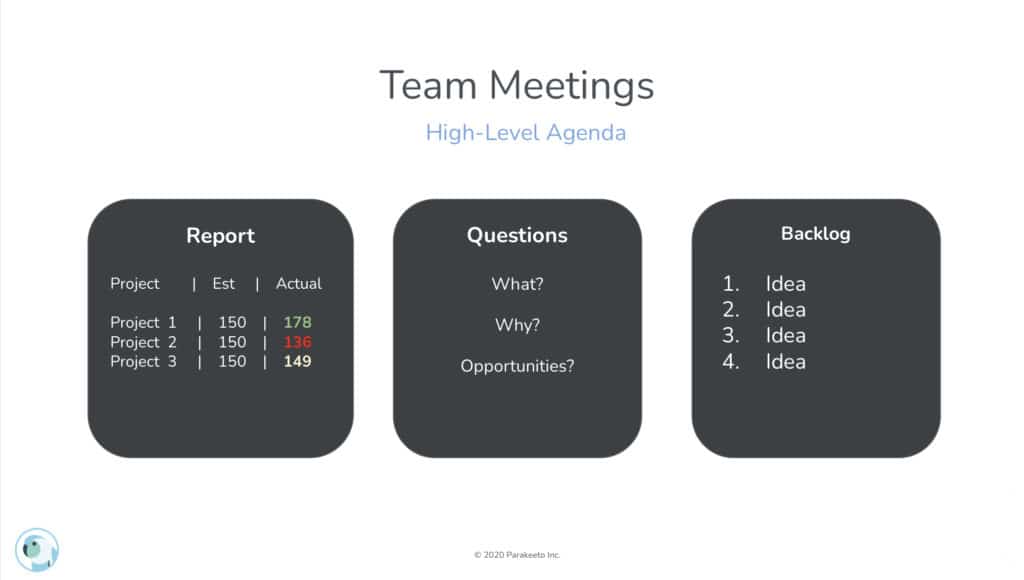
The key to this step is determining a sustainable cadence for discussion with your team about projects. We want to bake regular reporting and conversations about how and why projects go better or worse than expected into our business.
During these discussions, the goal is to collaboratively work towards “operationalizing excellence” as we like to say. This is a fancy way to describe creating and improving processes to avoid things we want less of and repeat things we want more of.
The two most common ways of structuring these meetings are through project performance cadences and retrospectives.
There’s only one real difference between these two flavors of meetings. Retrospectives typically occur at the end of a specific project, while project performance cadences are set meetings that occur on a fixed cadence (weekly, bi-weekly, monthly, etc)
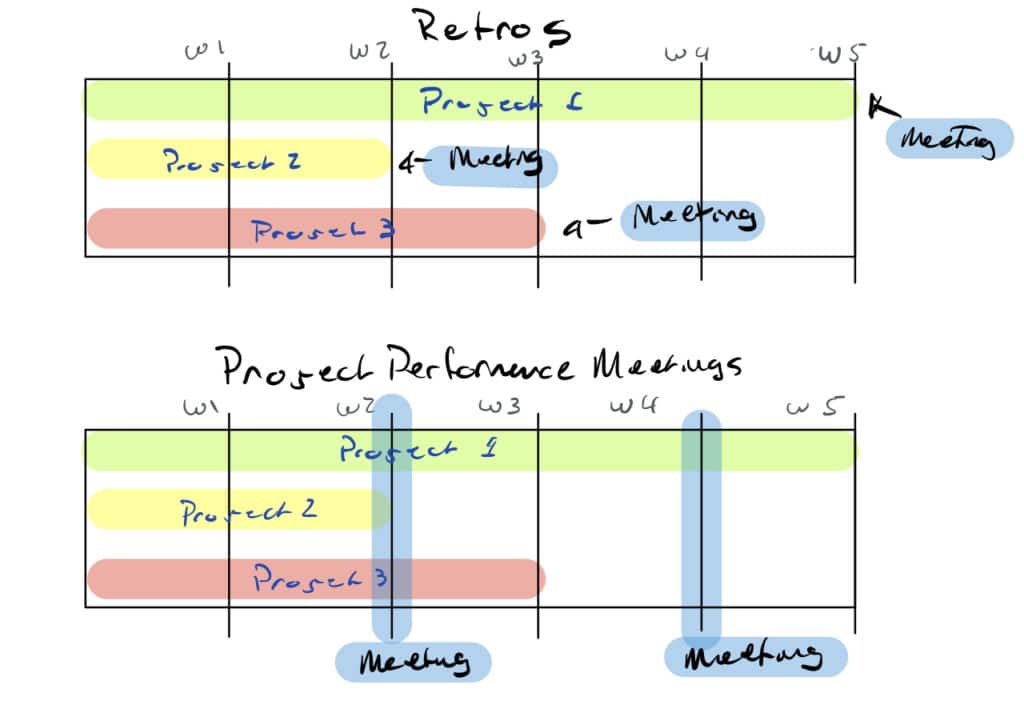
In either case, these conversations are meant to accomplish a few important things:
- Review a report of estimates vs actuals for completed and/or ongoing projects
- Ask questions about why things did/are or didn’t/aren’t going as planned
- Surface insights and opportunities from the team
- Build a backlog of process improvements based on that feedback
- Course correct in-progress projects if the opportunity exists
Side note: if you’ve got a process for how you go about defining your scopes for projects, it’s best that you install a regular cadence to review and tweak these numbers based on past performance as time goes on. The Agency Profit Toolkit is a free resource that has meeting templates that you could directly apply to this, among other goodies. Grab your copy below!
Keys to successful retrospectives and project performance meetings
1. Focus on process, not people
It’s easy for these meetings to turn into the team getting grilled about going over budget on projects. This is a one-way track to completely killing all buy-in and engagement in these meetings from your team.
Weaponizing the data should be avoided at all costs. In some cases, it may even make sense not to share the data with your team during these discussions. If you find that the data is leading to heavy biases, people being blamed for outcomes or other bad behavior. Try these conversations without showing the data, and simply use it to guide your questions.
Remember to use language like us – avoid singling people out. Always refer to the process when discussing where things went wrong, not individuals.
Don’t say:
“Jane, you spent twice as much time on project management during this project as was budgeted, why is that?”
Do Say:
“It looks like our estimate on project management was off by about half. Any ideas on what may have caused that gap?”
2. Facilitate, don’t dictate
Another common mistake is coming to the conversation with biases or opinions on how to solve the problem. It’s extremely important to withhold those biases until the team gets stuck and requests input.
The objective is to invite the team to engage in the process of ideating. We’re looking to them for ways to work more efficiently and consistently. Biasing that conversation can prevent team members from speaking up, or rob the group of the opportunity to surface ideas that are out-of-the-box.
Most importantly, it can stunt the level of ownership your team feels about the processes that are being created. That sense of ownership is critical to the successful implementation, maintenance and compliance of new processes. If your team comes up with processes, they’ll likely feel more ownership for them. If they feel ownership, they’ll likely follow, maintain and value these processes going forward.
3. Protect The Time
Whatever format you chose, do everything possible to avoid letting client work push these meetings out of the calendar.
Consistency is key to building momentum in this process. It signals to the team that the process and their input in it is important and valuable.
You might find that as estimates get more accurate, protecting this time becomes easier. Fewer “unexpected things” come up, and your resource plans will actually become more reliable. Meanwhile, it’s critical to protect the time for your team to engage in this process. In other words, you must make it “okay” for them to work on the outputs of that process instead of client work.
If we don’t protect the time and let client work trump these meetings all the time – we send the message to our team that their input and our processes aren’t important. That’s how agencies end up stuck at the same headcount for years at a time.
Step Four: Process Improvement Cycles
In the first two parts of this process, we set ourselves up to place data points on our relationship line. This enabled us to quickly understand how the inputs we collect during our discovery or sales process with a client map to effort. Leading to more accurate and timely estimates.
Following that, we talked about how to use that data to drive conversations with our team. This helped us surface information about how and why projects go differently than we planned. Moreover, it helped us surface ideas from our team about how to improve our delivery systems.
This last step is about taking those ideas and successfully turning them into processes that everyone can benefit from. Implementing those ideas should lead to consistent quality in our work. More consistent time investments in that work that are easier to predict. Plus it should lead to clearer, more defined and scalable processes for our business and team to lean on.
As those processes get more defined, we’ll start to see the distribution of our data points move closer to the centerline. This is because processes will help normalize the variance of effort from one project to another. All of this leads full-circle back to fast, accurate estimates.
We get better at predicting effort because the effort gets more predictable. Brilliant!
In order to succesfully implement those process improvements, we want to get clear about the cadence framework we use to turn ideas into action over time.
This means defining iteration frameworks for two things:
The delivery processes
The project estimating techniques
Just like the process for our qualitative feedback loops, the key to this step consistency. We achieve that by defining a cadence for developing and investing in a process that is sustainable. Again, that comes back to being able to protect that time from the forces of client work.
Iterating on Delivery Processes
Our favorite way to get an accurate estimate has generally been to treat process improvement cadences like product development sprints. We do this with bi-weekly or monthly “sprints”. During these sprints, the team prioritizes a backlog of process improvements that surfaced from our project retros or performance meetings. Then they assess the complexity and effort for those ideas, assigns ownership and plan time to execute on those tasks.
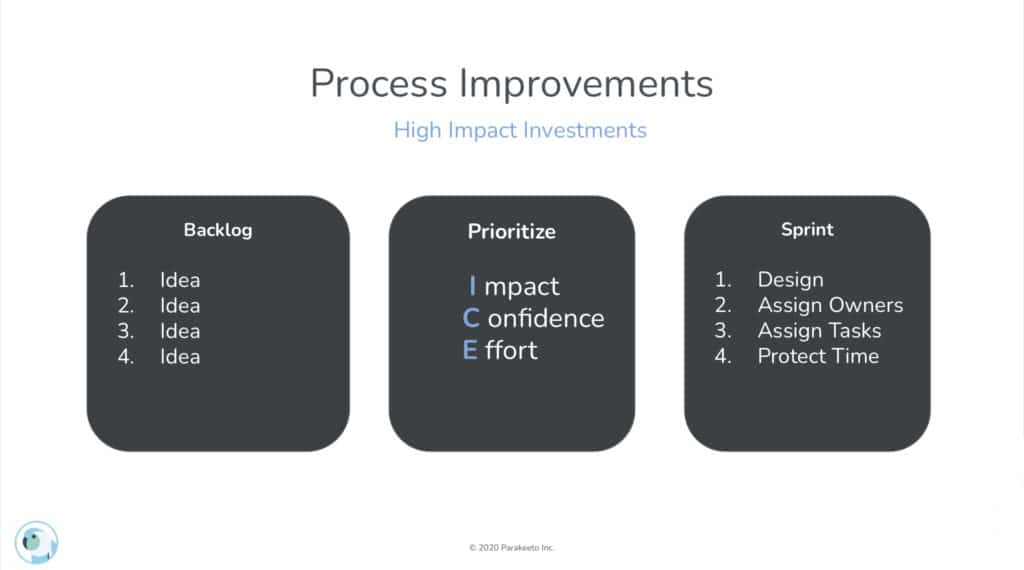
We repeat this process on a defined cadence (usually bi-weekly or monthly) and continue working on new processes and refreshing existing ones in perpetuity. This ensures that the feedback loop in the business is truly closed, and our business naturally evolves over time.
Iterating on Project Estimation Processes
Finally, we also want to define when we will sit down to re-visit our project estimation frameworks. The goal here is to build out statistically relevant relationships between the inputs and outputs of our scoping and sales process. We do that by taking the project cost and time tracking data we’ve collected and mapped it against our scoping metrics. The end result should be “formulas” that can easily be used for fast and accurate estimates.
Iterating on the new information we get from our reporting and meeting cadences might mean building a library of projects grouped by type and sorted by size/scope. Further, it could also mean developing graphs that map the trendline between our scoping metrics and effort based on the types of projects we do or updating drivers in a spreadsheet. Even something as simple as jotting down notes to help us estimate more accurately is a step forward.
By combining these data-driven relationships, our reporting & feedback cadences and the increased predictability of our ever-improving processes, we should see the gap between our estimates and our real-world result close over time.
Ultimately, this should lead to more consistent and higher profits. That means better, more consistent work for clients. Better, more accurate resource plans. Not to mention – fewer evenings and weekends away from a family working to hit deadlines.
Infographic
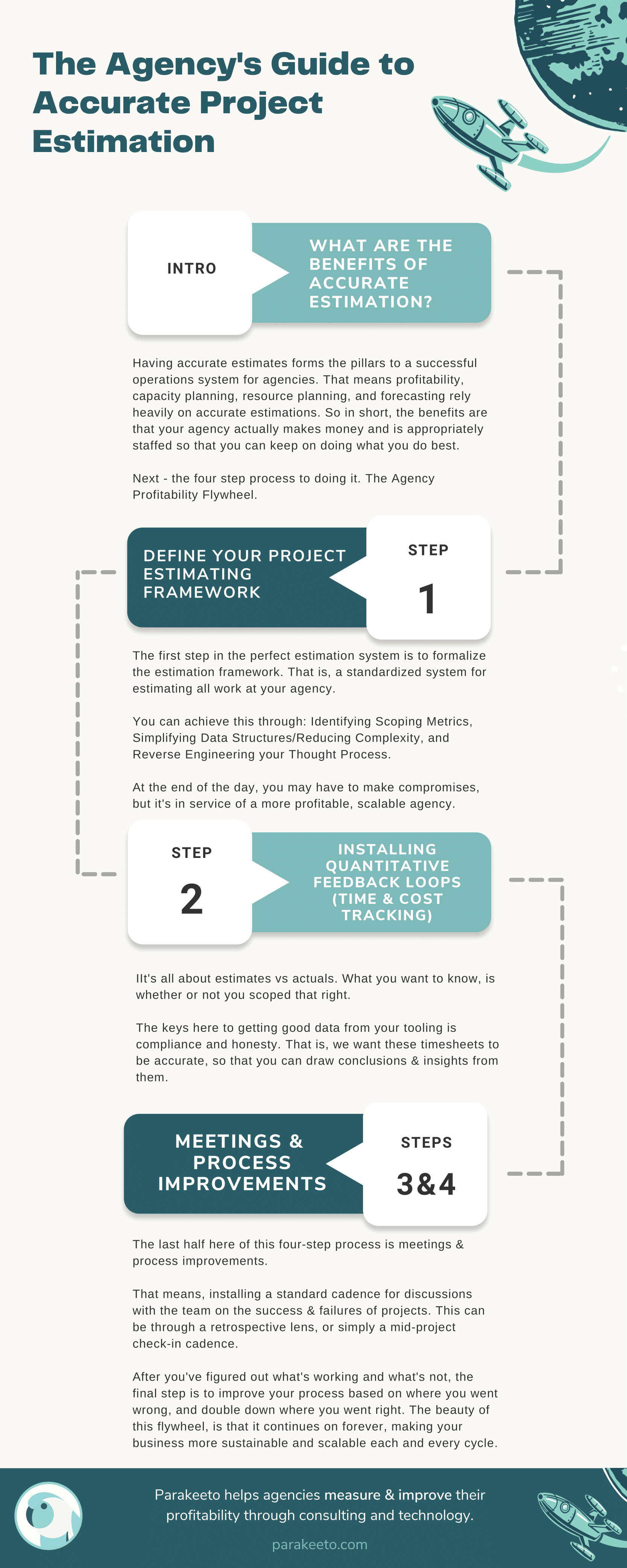
Project Estimation FAQs
ㅤ
There are many tactical methodologies for arriving at an estimate, 8 of the most popular are:
– Bottom-up estimation
– Top-down estimation
– Comparative or analogous estimation
– Parametric model estimation
– Expert judgment estimation
– Three-point estimation
ㅤ
ㅤ
3 point estimation is an estimation strategy that uses three estimates to try and triangulate a reasonable estimate for a given unit of work. Stakeholders estimate an optimistic, pessimistic and most-likely estimate and then use the average of those three to land on their final estimate.
ㅤ
ㅤ
While different estimation techniques apply depending on the type of project being estimated, studies have shown that the most accurate forms of estimation tend to be the ones that incorporate data about past performance as part of the process.
ㅤ
ㅤ
Project estimation is essential to project and operations management. Without estimates about the time and cost required to deliver a project, it is extremely difficult to plan and resource projects as well as protect profit margins.
ㅤ
Next Steps for Accurate Estimates
Whether it’s protecting margins, making sure our team gets home to their family for dinner or predicting when we’ll need to hire our next staff member – when we can deliver an accurate estimate to a client, everything in our agency gets easier. This fundamental skill is the bedrock of our operating system as a service business.
As you have gathered by now, there’s a lot of work and resources that go into doing this right. We set out to make this easier at Parakeeto by building intelligent estimation tooling for our clients.
If you want a solution that makes it easy to connect your time-tracking data to your estimating process and build that feedback loop into your business, click here to apply for a consultation with one of our agency profitability consultants.
If you’d like access to a library of tools we’ve put together to help you implement this process on your own, you can get free access to our Agency Profitability Toolkit below. It’s full of templates, training videos and resources to help you implement every step of the process described in this blog post.

Marcel is an agency profitability optimization consultant, keynote speaker and the CEO of Parakeeto. He’s on a mission to help the average agency get the information they need to be more profitable. From sharing educational content and resources to creating tools at Parakeeto to make measuring the most important metrics easier – everything he does is aimed at making agency profitability more accessible.

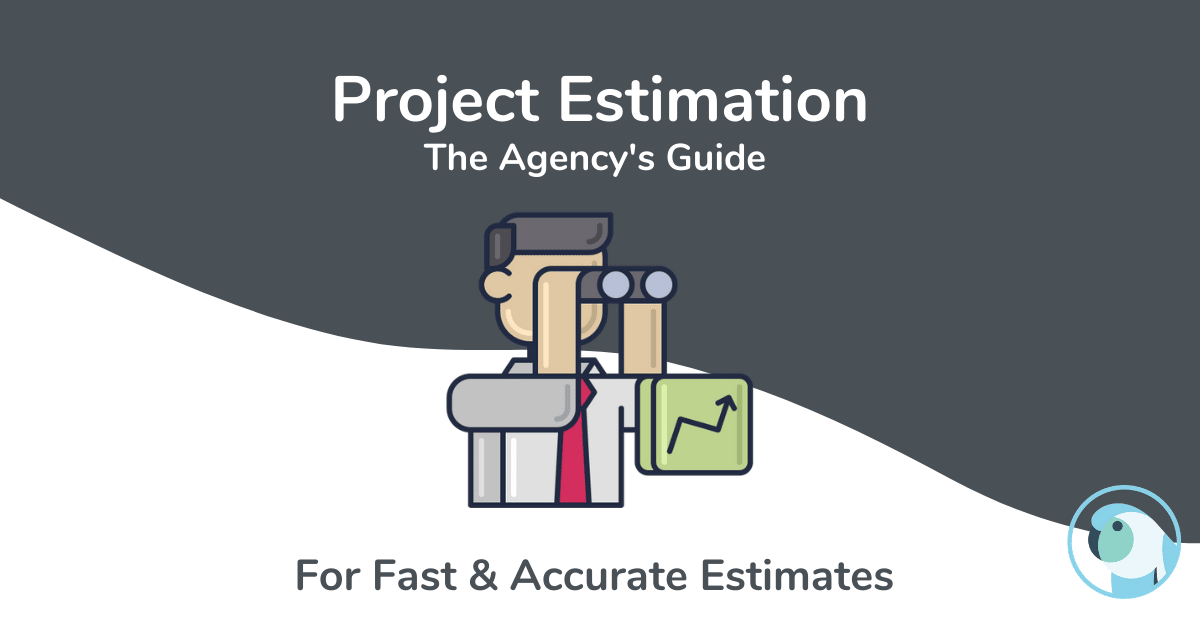


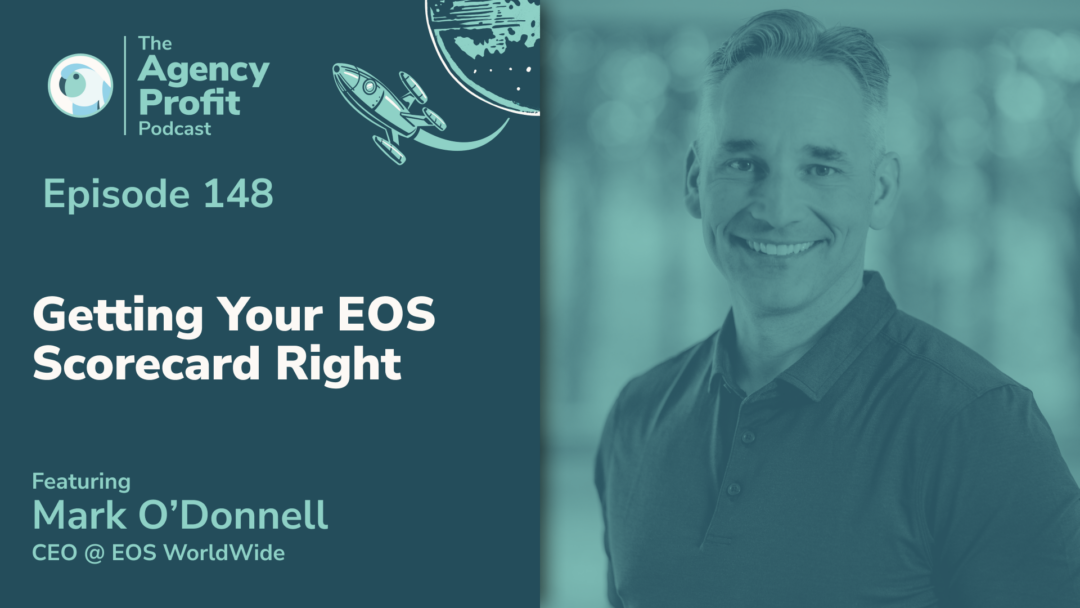
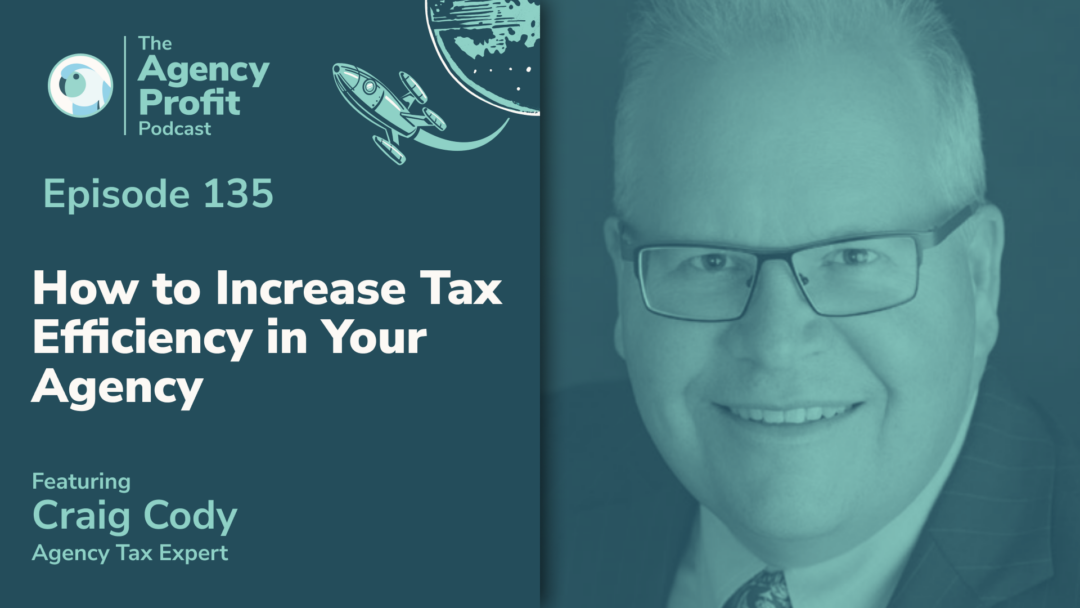
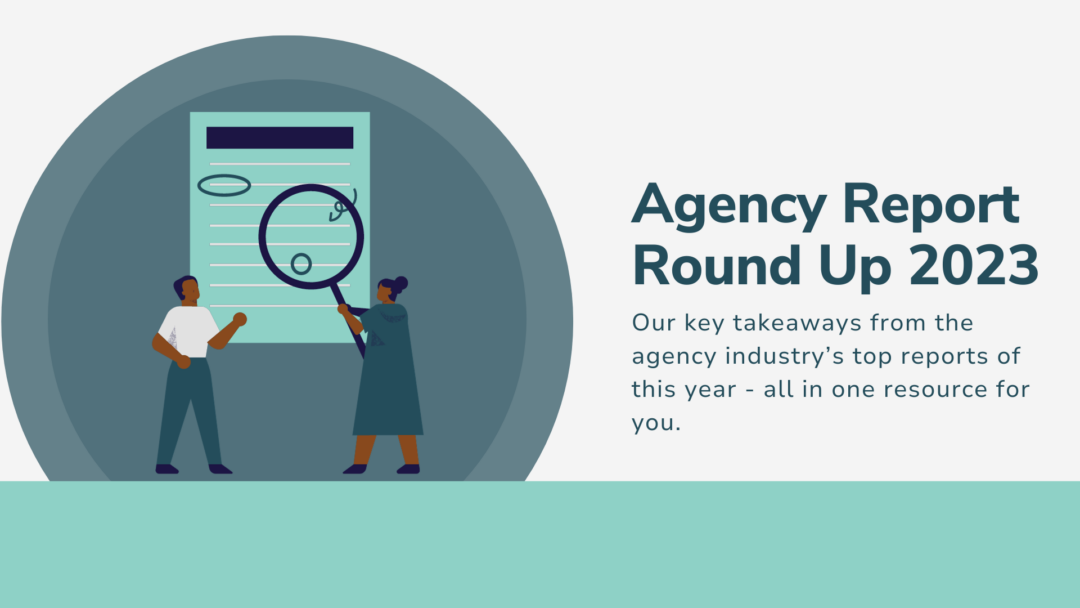

0 Comments